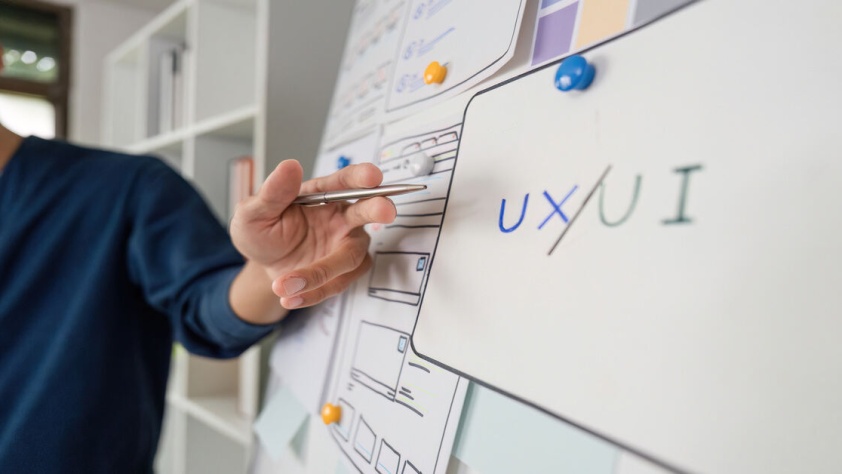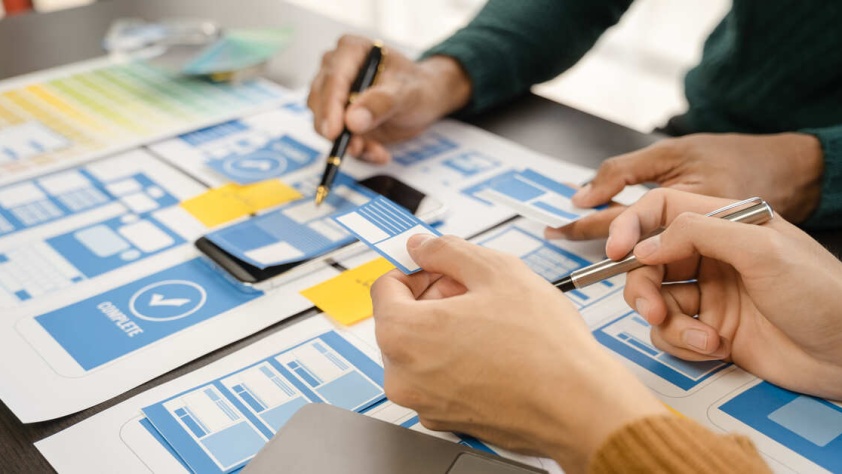The role of design in the present day digital environment goes far beyond looks. It is an influential instrument that influences user experiences (UX) of different platforms and products. Due to the growing need of people to have smooth and intuitive experiences, designers should give more emphasis not only to the appearance of the things but also to their functionality. This blog discusses the concept of design as a central component in user experiences, the major principles, and methods, and how user-centered design influences the total satisfaction.
Knowing User Experience
User experience refers to all the encounters of a user with a product or service and brand. It comprises the usability, the accessibility, and the pleasure of the use of a system. Customer satisfaction, loyalty and retention depend on a positive user experience. On the other hand, a low user experience may create frustration, abdication and brand negative views.
Design is incredibly critical in the creation of these experiences. It is the connection that exists between the users and the technology whereby complex functionality is converted into user-friendly interfaces. When designers get to know the needs, motivations and behaviors of users, they can develop experiences that are relevant and appealing.
User Experience Principles of Design
In order to facilitate the development of successful user experiences, designers need to follow a number of principles:
1. User-Centered Design
The key to the successful design is the concept of the user-centered design (UCD). Such an approach underlines the need to research and get feedback on the needs, preferences and behaviors of the users. UCD includes cycles of experimentation as designers develop designs by creating prototypes, receiving user feedback and improving designs based on real-world interactions.
The teams can also make sure that products are designed to suit their needs and expectations by putting them at the center of the design process. This results in more gratifying and successful user experiences because the users are convinced that their feedback has influenced the end product.
2. Stability and Recognition
Design consistency is an imperative when it comes to the development of easy user experiences. The consumers must have the ability to tell how a product will react to their history. This involves ensuring that there is consistency in colour, fonts and styles of buttons and navigation schemes in various pages or screens.
Experience is also very important. The designers can minimize the learning curve and make the product more usable with design features that users are already familiar with. As an example, the standard icons to any common action (such as the use of a magnifying glass to search) can allow the user to understand its use swiftly without any misunderstandings.
3. Simplicity and Clarity
Effective design is based on simplicity. Unnecessarily complicated interfaces may saturate the user by frustrating them and making them disengaged. The designers need to strive to keep at a minimum the features that are not needed and what really counts.
Effective communication is also essential. This will include simple language, easy navigation, and directions to action. Designers can make the experience a more enjoyable and effective one by making sure that the users can locate what they need with ease and know how to use a product.
4. Accessibility
Accessibility is one of the basic considerations of user experiences shaping. Users with different capabilities should be kept in mind when designing and the product should be accessible to all users including people with disabilities. This entails the use of features like screen reader, keyboard navigation, and use of appropriate color contrast.
By making designs available, the user base is expanded and is also an indication of willingness to be inclusive. The overall user experience is improved when every user is able to interact with a product.
Designing Process and User Interface
Designers usually adhere to a structured design method in order to create user experiences that are effective. This process may have many important steps:
1. Research and Discovery
The first one is learning the users and their needs and what is the situation under which they will apply the product. This can be done in different research processes; this includes surveys, interviews and user testing. The newly acquired knowledge in this stage shapes the design direction and assists in defining the pain points and opportunities.
2. Ideation and Prototyping
When the research is successful, it is followed by a stage of ideation where designers come up with ideas and concepts of the product. This frequently includes sketching, wireframing, and low-fidelity prototyping that can be iterated upon and have feedback.
Prototyping has played a critical role in the design process as it allows designers to see what they are making and get to test it with the users at an early stage. Designers can base their decision making on the results of the prototypes and can tweak their designs to the extent of proceeding to high-fidelity versions.
3. Design and Development
Having a good sense of what is needed by the user and validated ideas, the designers come up with high-fidelity designs that reflect the final product. This is in the form of detailed layouts, visuals and interactions.
The designers and developers should work closely at this point. Communication is important in that the design vision can be properly translated into the actual product without compromising the usability and functionality.
4. Testing and Iteration
The product is developed and then usability testing is carried out to determine how the product performs in the real world. This will mean monitoring the users during their interaction with the product, where they experience any form of pain and getting any feedback on the experience.
Depending on the test outcomes, designers will be able to make adjustments to the design and provide the needed changes to enhance the usability and the overall satisfaction. Such a cyclic format makes the end product of the process meet the expectation of the users and give them a satisfactory experience.
How Good Design affects the User Experience
The design is very influential on user experience. An effective product should be attractive as well as usable, easy to use and to use. The main advantages of good design in the formation of user experiences are as follows:
1. Greater User Satisfaction
Users tend to experience positively when they are exposed to products which are well-designed. This satisfaction may result in a boost of customer loyalty as there is a higher probability of the user returning to a brand that serves him or her well.
2. Enhanced Usability
Good design makes the user experience easier to follow through as people will find it simpler to use and navigate through a product. When usability is made to be a priority, users are able to achieve their objectives effectively, and they will be less frustrated and will have a better experience.
3. Brand Perception
Design is known to play an important role in order to create the perception of a brand. A properly implemented design will convey professionalism and focus to detail, which builds the trust and credibility of the users. On the other hand the wrong design may result in bad perceptions and brand erosion.
4. Competitive Advantage
With the multitude of brands in a market, a competent design can make a brand stand out among others. Organizations can also attract and retain customers through offering better user experience which would eventually result in success and market share.
Conclusion
Design has become central in the current digital environment to determine user experiences. With user-specific design, regularity, ease and approachability, the designers are able to produce products that will appeal to the users and contribute to the overall experience. Organizations can use a systematic design process, which involves research, prototyping, and iteration, to make sure that what they offer joins the various needs of their audience.
In the digital world that is constantly being changing, the role of design in the design of user experiences will never be more important. Good design principles help businesses to create loyal customers, customers satisfied and eventually lead to success in a competitive business world. Ultimately, the intelligent interaction of design and user experience will result not only in the production of products, but also in valuable interactions and long-term relationships with users.




